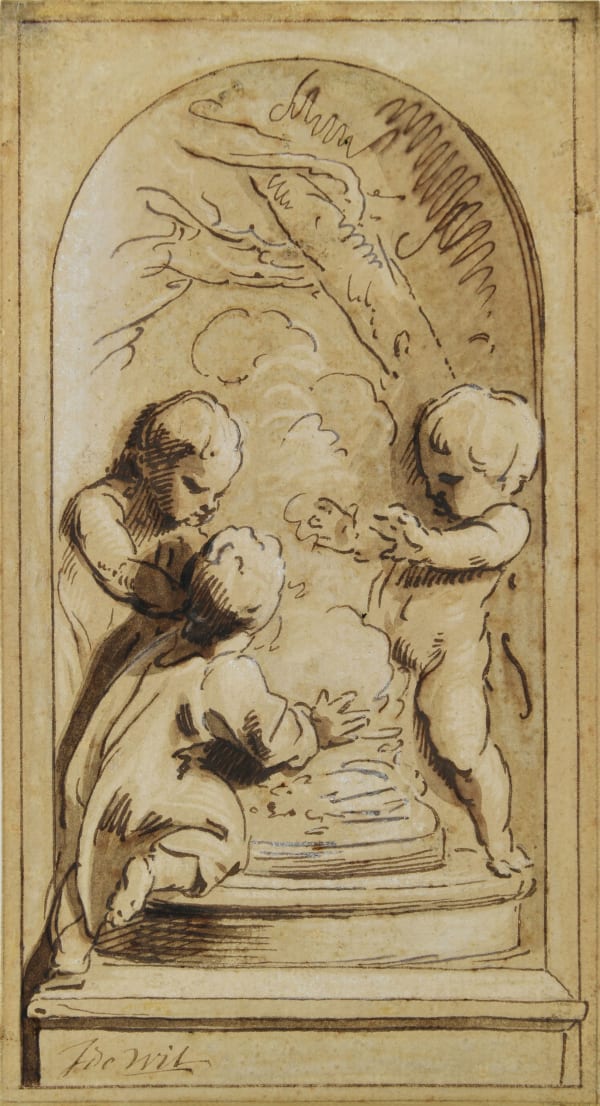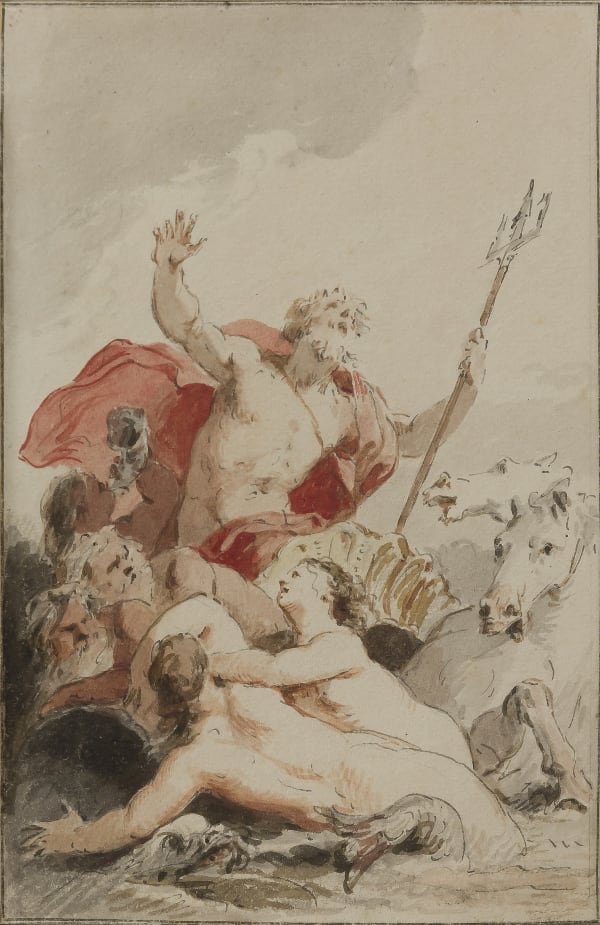Jacob de Wit (Amsterdam 1695 - 1754)
Jacob de Wit was born in Amsterdam in 1695. He received his first training, with the painter Albert Spiers, at the early age of nine. When he was thirteen, he went to Antwerp to study at the Academy. He became a pupil of Jacob van Hal, and went on to become a member of the guild of St Luke in 1714. While in Antwerp, he also produced a series of watercolour sketches of the ceilings decorated by Rubens in the Jesuit St Carolus Borromeus Church. As the church was struck by lightning a few years later and the ceilings were lost in the fire, these works, which were later engraved, became important historical documents. The work and style of Rubens – especially his cycle for the Borromeus church – were to leave a lasting impression on de Wit.
In 1715, de Wit returned to Amsterdam, where he became a much sought after artist for his decorative paintings on walls, doors and ceilings. Wealthy patrons who lived on the grachten in Amsterdam commissioned decorations from him. As many of them also had country houses, de Wit did a lot of work in neighbouring Haarlem and Vecht as well. De Wit was a great illusionistic painter who often worked in grisaille. He was also a prolific draughtsman, producing a great number of sketches and drawings for his projects, as well as independant 'picture' drawings, intended as works of art in their own right. His work is represented in nearly all major institutional collections, in addition to many private collections.
The present mature work, a beautiful example of a picture drawing made for a private collector, was probably executed in the 1730's. Interestingly, another version of this so-called 'Ioannes in Disco' (Head of St John the Baptist on a Plate) is kept in Teylers Museum, Haarlem. Our drawing was once in the collection of the famous Dutch drawings collector Cornelis Ploos van Amstel, who died in 1798. Beginning on March 3, 1800, his collection of over 7000 drawings was sold at auction; our drawing is mentioned in the catalogue of that sale under number NN6.
Provenance
Cornelis Ploos van Amstel (1726 - 1798);
His sale, March 1800;
Private collection, Amsterdam/Antwerp.
Literature
Catalogus der teekeningen, prenten, schilderyen, [...] medailles, atlas van Amsterdam, mathematische, optische en physische werktuigen, van wylen den Heer Cornelis Ploos van Amstel, Amsterdam, 1799, no. NN6.
- X
- Tumblr
-
 Jacob de Wit (Amsterdam 1695 - 1754)An Allegory of Winterpen and brown ink, brush and wash on laid paper235 x 130 mmsigned 'JdeWit', bottom left
Jacob de Wit (Amsterdam 1695 - 1754)An Allegory of Winterpen and brown ink, brush and wash on laid paper235 x 130 mmsigned 'JdeWit', bottom left -
 Jacob de Wit (Amsterdam 1695 - 1754)Mucius Scaevola before Porsennablack chalk, pen and ink, white highlights on beige prepared paper170 x 238 mmsigned 'Jdwit', bottom left
Jacob de Wit (Amsterdam 1695 - 1754)Mucius Scaevola before Porsennablack chalk, pen and ink, white highlights on beige prepared paper170 x 238 mmsigned 'Jdwit', bottom left -
 Jacob de Wit (Amsterdam 1695 - 1754)A Preparatory Drawing for 'Liefde Triompheert'pen and ink, brush and wash on laid paper120 x 110 mmsigned 'JdWit fe', lower right
Jacob de Wit (Amsterdam 1695 - 1754)A Preparatory Drawing for 'Liefde Triompheert'pen and ink, brush and wash on laid paper120 x 110 mmsigned 'JdWit fe', lower right -
 Jacob de Wit (Amsterdam 1695 - 1754)Neptune; Ceres, Cybele and Abundance (2)watercolour over pen and brown ink on laid paper175 x 113 mm (each)
Jacob de Wit (Amsterdam 1695 - 1754)Neptune; Ceres, Cybele and Abundance (2)watercolour over pen and brown ink on laid paper175 x 113 mm (each)




